27/11/2023
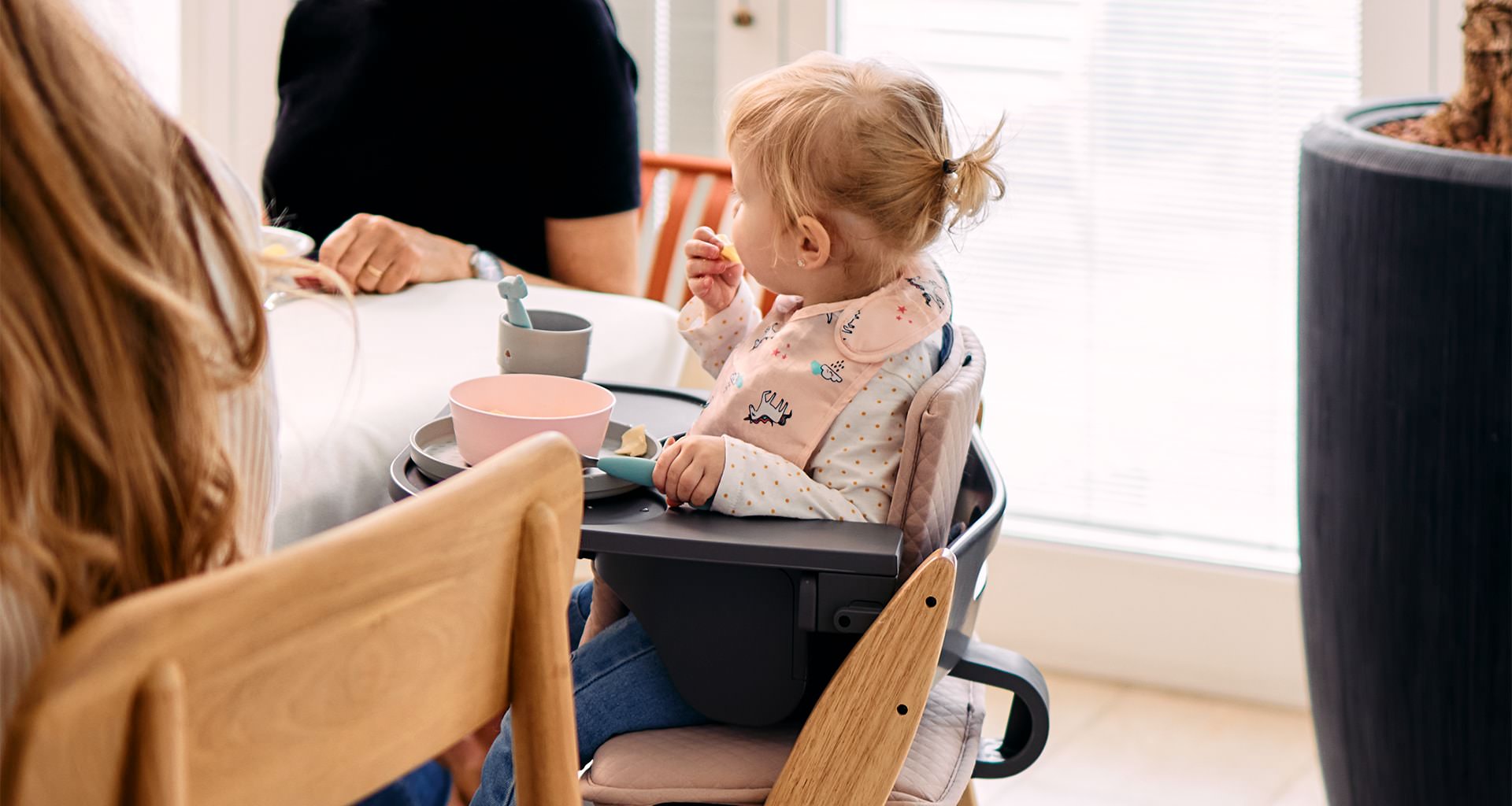
Starting Solids
Embarking on the Adventure of Complementary Feeding with YIPPY
Food is ready! Three words that draw everyone to the table. Young and old alike. And it doesn't even have to be your favorite meal. Because, more importantly, mealtime is family time. The conversations, rituals, and the time spent together at the table often weigh more than the full plate. However, that plate is usually particularly intriguing for the littlest ones at the table. Because, for them, food is an adventure above all else. Bread, bananas, and more become really exciting around the 6th month. From their favorite spot at the table, they no longer just watch but also join in on the eating. The time for complementary feeding begins. And this plays an important role in your baby's optimal nutrition and further development.
When exactly your baby is ready, what options are available for starting complementary feeding, and how to set up a safe and comfortable place at the table for your baby – we have put together all of this information for you here.

When to Start Complementary Feeding?
First and foremost, there is no one right time for everyone. Every child has their own pace. So, you can relax if your baby doesn't follow any of the common complementary feeding plans or doesn't show an interest in solid food right at the beginning of the 6th month. Sometime between the end of the fourth month and the beginning of the seventh month, most babies show reliable signs of readiness for introducing complementary foods. You should pay attention to these signs to recognize the right time for your baby. The crucial factor is not a specific age in months but rather the physical and cognitive developmental stage. Important: All three signs of readiness should be fulfilled for starting complementary feeding.
Trunk Control
The baby's trunk control is developed enough so that it can sit upright independently for a short time or with some support (gentle support in the lower back) to maintain an upright sitting position on the lap during mealtime.
Tongue-thrust reflex
The natural tongue-thrust reflex is very weak or no longer present, and the baby no longer pushes solid food offered with its tongue out of its mouth.
Hand-Foot Coordination
The baby is capable of coordinating its eyes, hands, and mouth, enabling it to visually perceive food, pick it up with its hands, and independently bring it to its mouth.
If your baby displays all of these readiness signs but still shows little to no interest in solid food, don't worry. Be patient and remain calm. Changes take time, and there's nothing wrong with pausing complementary feeding and trying again for a second or even third attempt if necessary.
If in doubt, please consult your midwife, pediatrician, or a specialist in infant nutrition. They can provide individual advice on starting complementary feeding and professionally assess your baby's development, particularly in terms of readiness signs.
How to Approach Complementary Feeding?
The type of complementary feeding is often a topic of much discussion. However, whether you use your hands or a spoon, the key aspect of starting complementary feeding should be relaxation. Therefore, take your time to introduce your baby to solid food and allow them to slowly discover and get accustomed to various new foods, flavors, and textures. Pay attention to their pace, learn to interpret their signals and body language regarding food, and patiently offer them new foods repeatedly. Allow them to eat autonomously and respect when they're full. There will be days when they reject everything, eat more than ever before, or feel full after just one spoonful. The amount they eat varies greatly at the beginning of complementary feeding and is not a cause for concern because most nutrients and energy are still obtained through milk feedings, which are gradually reduced and eventually replaced. The quantity and variety of foods gradually increase. From the first piece of banana or the first spoonful of porridge to family meals, it's a long journey for both you and your baby, one that should be enjoyable above all.

What to Offer as Complementary Food?
In general, complementary food refers to everything babies receive as food in addition to breast milk or infant formula. This includes foods such as vegetables, fruits, meat, fish, grains, or potatoes. Each of these food groups serves a purpose in terms of providing for your child's nutrition and further development and thus gradually becomes an important part of their diet to meet their increasing energy and nutrient needs. The transition from milk to solid food is gradual. At the beginning of the transition, complementary feeding alone does not satisfy a baby's hunger. Therefore, mother's milk or infant formula remains an important part of their diet throughout the first year of life. Vitamins and minerals are essential in complementary feeding. However, spices, salt, added sugar, or added flavoring ingredients like fruit powder or cocoa should not be part of a baby's diet during infancy.
There is room for flexibility in terms of "how" to introduce complementary foods. There is no one right way. Various approaches are available for introducing your baby to a new variety of foods. You can choose from baby puree, whether store-bought or homemade, baby-led weaning (BLW), whereby purées and spoon-feeding are skipped entirely, or a combination of both methods. Base your decision on your child and make an individual choice for your family.
Complementary Feeding with Baby Puree
Introducing complementary feeding with baby puree follows a recommended plan, a sort of rough roadmap or guideline that you can follow. It specifies which puree to introduce in which month of life. The variety of foods and the amount of puree gradually increase. This allows for more precise control of nutrient intake. The complementary feeding period starts with a mild lunch puree made from vegetables, potatoes, and meat (or vegetarian with cereal flakes), initially as pure vegetable puree. This is followed, with about one month's interval, by the evening porridge made from milk and cereal flakes and the afternoon porridge made from cereal and fruit. The plan also includes recommendations for the gradual transition from puree meals to family meals. Whether you prepare the puree yourself or opt for store-bought products is a personal decision.
Baby puree-free Complementary Feeding (BLW)
With the baby puree-free, baby-led alternative, your child eats suitable solid foods directly with the family at mealtime, autonomously and at their own pace, starting when they are ready for complementary feeding. The baby's plate is arranged in an appropriate way: baby-friendly finger foods, finger-thick easily graspable pieces, salt-free/low-salt food, cooked components, or soft steamed vegetables and fruits from which your baby can independently choose what and how much to eat. Hard, round, elastic, and raw animal products should not be on the plate. There is no adherence to common complementary feeding plans, and purees are completely omitted.
Baby Puree and Finger Foods
Choosing to start complementary feeding with baby puree does not mean you should eliminate finger foods from the diet. On the contrary, finger foods support your child's motor development and are therefore a great addition to baby puree. Ensure that finger foods are prepared and presented in a baby-friendly manner as described for BLW. Your baby doesn't need teeth for soft finger foods; they can chew effectively using their gums. However, they should already have the ability to independently grasp food items and bring them to their mouth, either with their whole hand or using the pincer grip.
How to Set Up the Baby's Place at the Table?
Their own spot at the table. Right in the middle of it all. From the beginning. Something very special for your baby. And this happens long before the food on the table becomes interesting. Even the youngest ones enjoy the family gathering at the table and experience shared meals as a formative family ritual. Thus, the high chair often becomes one of the first baby-related purchases, even before bibs and spoons.
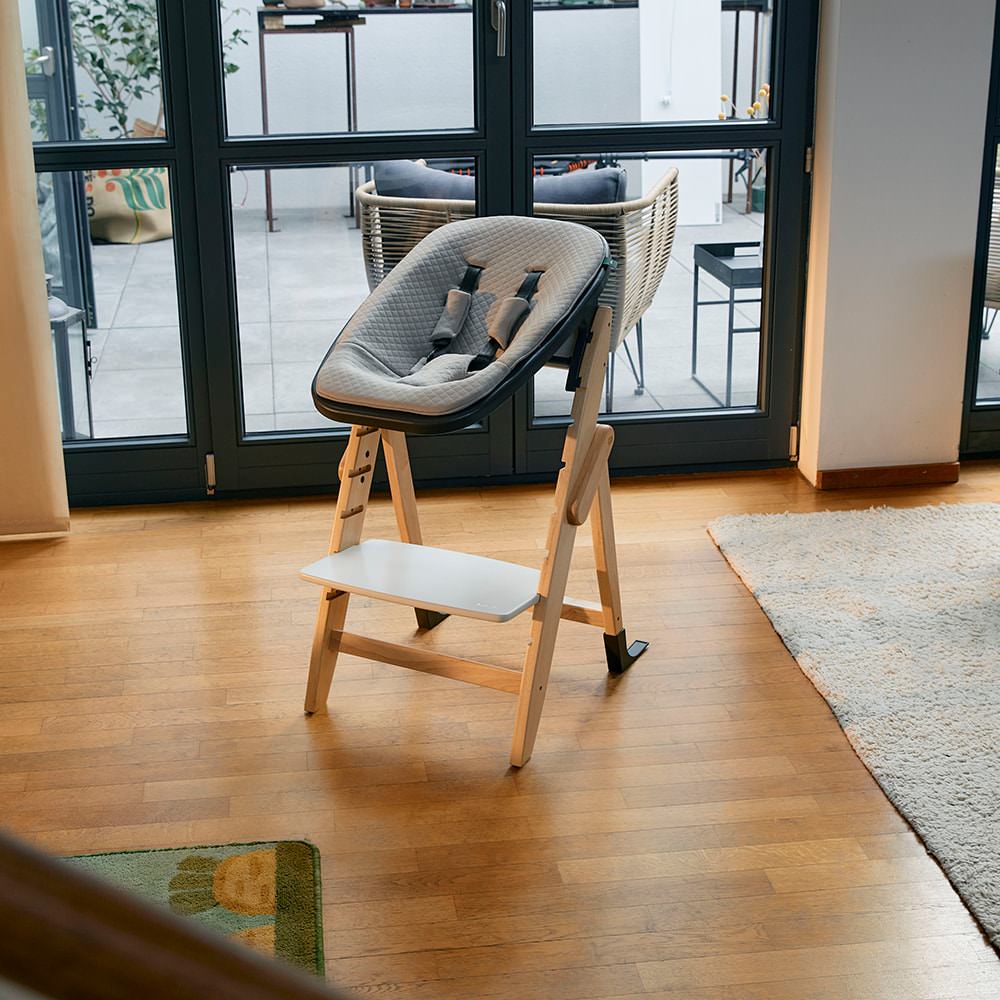
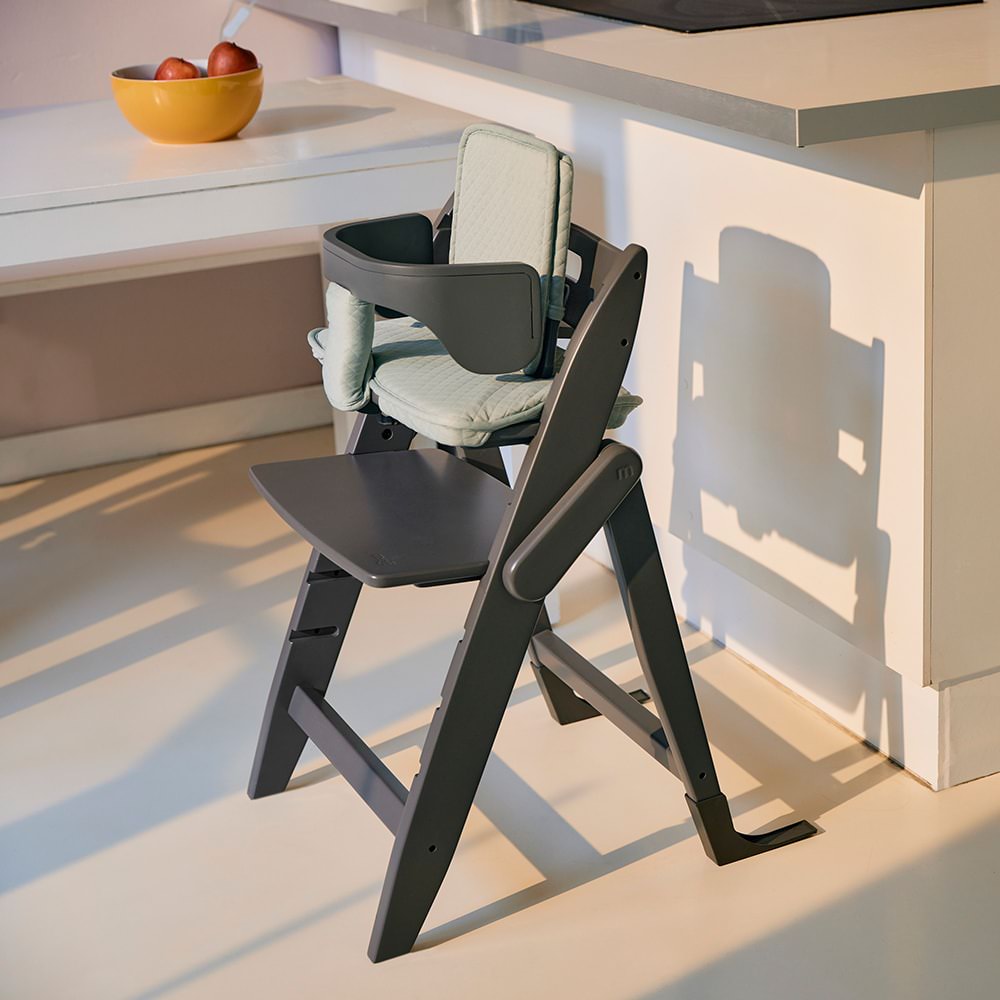
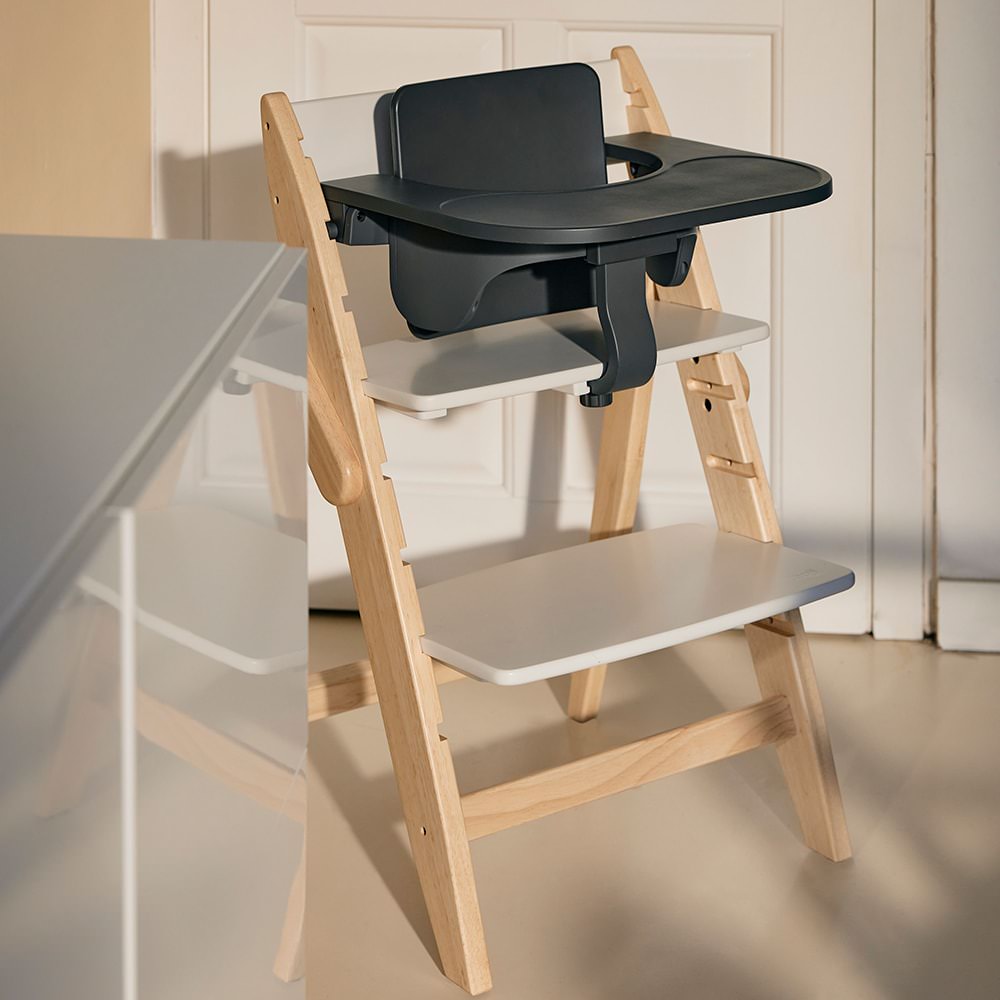
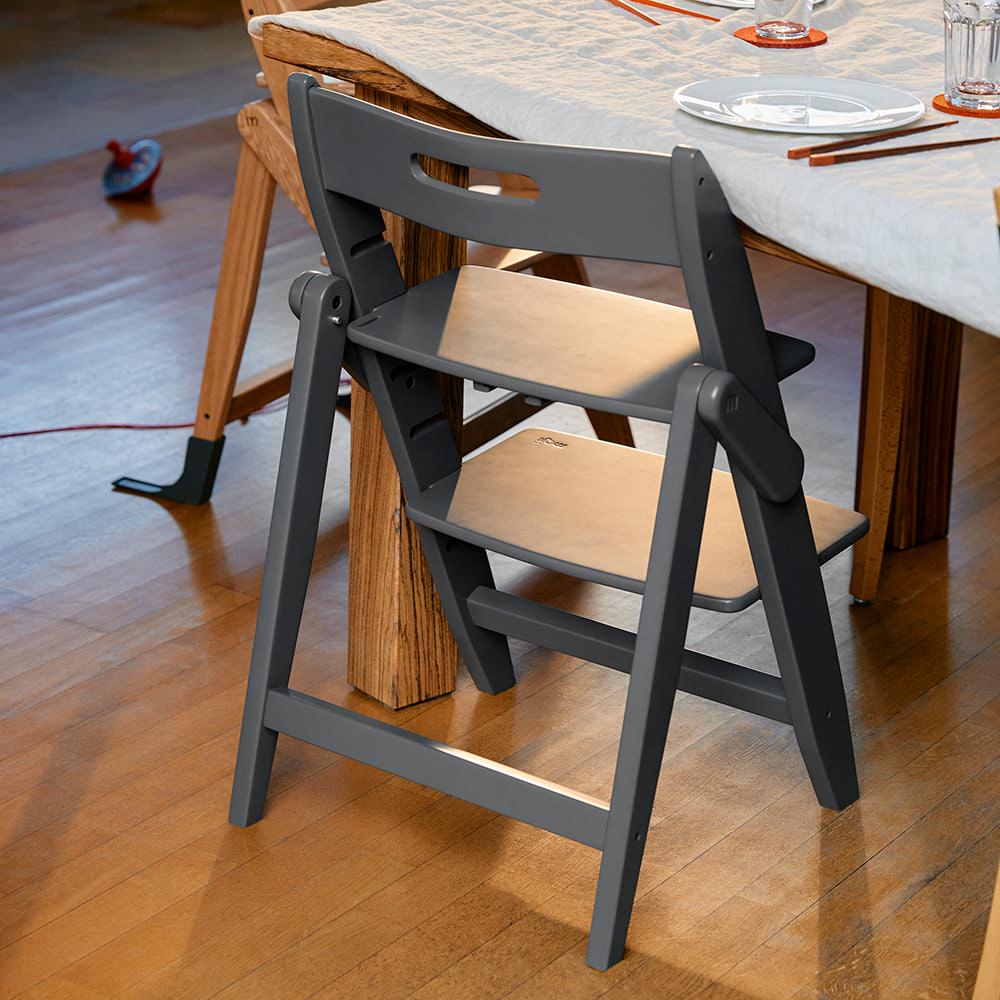
With the YIPPY newborn unit, your baby can be part of the family table experience from birth to approximately 6 months of age, at eye level. The nest-like shell attachment with an integrated 5-point harness system is attached above the YIPPY high chair's seat and can be adjusted from a slightly upright position to a flatter reclining position. This allows your baby to experience the special atmosphere at the table early on, enjoy the closeness and togetherness of the family, listen attentively to conversations, and watch you during meals. These are valuable and formative experiences for your child, especially in preparation for starting complementary feeding. When that time comes, you can feed your baby on your lap with your support, always in an upright position, until your baby is capable of sitting safely on their own. Once this milestone in motor development is achieved, you can use the YIPPY high chair for meals and relaxed feeding sessions. Your baby will love exploring food in the children's high chair. There will be spills, messes, tastings, and experiments, with a lot of food ending up on the floor. That's all part of the process.
The table will become more lively every day. Fidgety feet, nimble hands, eyes everywhere. Curiosity and independence increase daily. A growing high chair like YIPPY is the perfect support for this new phase in your child's life and development. You can complement it with suitable accessories that you can adjust and adapt according to your child's developmental stage, whether for complementary feeding or family meals. For example, the Starter Set for the wooden high chair, consisting of a protective bar and an elevated backrest, provides stability and comfortable seating for your baby to safely explore their newfound independence at the table. You can also combine it with a small food tray of its own, perfect for offering new foods to your baby and giving them ample time to explore and taste them independently with their hands. The table's smooth surface is easy to clean after experimenting and eating, and even if things get a bit chaotic at the table, plates and cups will stay securely in place. With a soft cushion set, YIPPY offers an even cozier seating and dining experience. Seat cushions, back cushions, and crotch pads are super comfortable and can be quickly and easily combined with the YIPPY Starter Set using Velcro fasteners. Sometimes you'll be surprised by how active, nimble, and agile your little one is at the table. Things can get quite acrobatic. With the optionally available adjustable YIPPY 5-point harness system, you can ensure additional safety and stability in the high chair. It's a good feeling for everyone at the table. When your child can sit freely without the Starter Set, the seat cushion from the set can still be used individually for the seat surface.
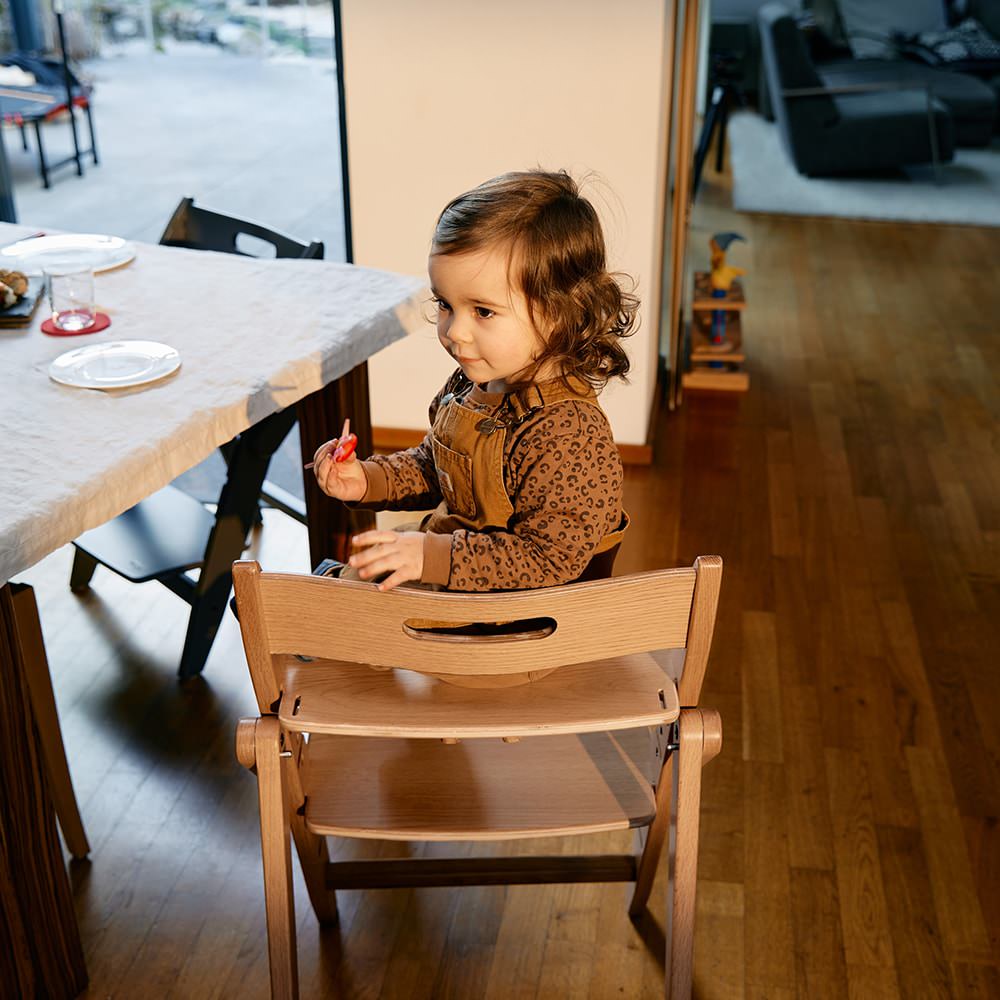

Very important: Family and food take center stage at the table. Your baby needs full concentration and attention for that. Distractions like TV, mobile phones, or tablets should not be part of mealtimes.
Regardless of whether you choose to start complementary feeding with or without puree, whether your baby is ready at 6 months or 8 months, we wish you and your baby a relaxed start to this new phase of life and lots of joy in discovering the wide variety of foods.
